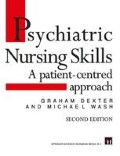Abstract
Katherine is not perhaps typical of the aggressive client, but neither is she untypical. She represents and exposes a powerful phenomenon that can be observed in many institutions among residents considered to be aggressive: people tend to behave according to other people’s expectations of them. We have to emphasize, however, that this is not so in every case. People become aggressive for almost as many different reasons as there are aggressive people, and consequently it is important to investigate the causes, as they hold the key to dealing effectively with the aggression. It is always more difficult to find the cause when the client is distant from the nurse, if the nurse is afraid, hesitant or withdraws from the relationship. The client’s problems and needs can never be fully understood and dealt with if a poor rapport exists.
Katherine has been in residential care for twelve years. She has become obese from prolonged use of major tranquillizers and institutional food. It is unusual to see her without a cigarette in her mouth or walking jauntily around eating a sandwich or sweets. It is possible that Katherine would not be noticed in a long-stay ward or mental health unit, except for the fact that whenever there is an incident she can usually be found in the midst of it. She has almost achieved notoriety within the care system. Staff are warned how unpredictable she is: if the fire alarm sounds, someone will remark, ‘Oh, it’s probably only Katherine’; when a pane of glass breaks, people expect Katherine to be the cause; if a client or member of staff has been attacked, inevitably Katherine has been ‘at it’ again.
Katherine is 32 years old, has been married and divorced, has a child, and both elderly parents are still alive, but she has not seen any of these people for some years now. Trained nurses, doctors and other professionals are wary of her, so it is not surprising that her family became disenchanted many years ago. Yet when time is taken to get to know her, she becomes more than just a manifestation of an undesirable behaviour pattern: she is a warm, caring and sensitive individual. She does not consciously intend to hurt anyone, but simply finds great difficulty in controlling her emotions. She can sometimes be seen in great distress, crying bitterly into a tissue, and if she is listened to she will tell how frustrated and depressed she is about her life. She will say how helpless she feels, with despair in the knowledge that she will probably spend the rest of her life in residential care.
Access this chapter
Tax calculation will be finalised at checkout
Purchases are for personal use only
Preview
Unable to display preview. Download preview PDF.
Further Reading
COHSE (1977) The Management of Violent or Potentially Violent Patients: Report of a Special Working Party Offering Information, Advice and Guidance to COHSE Members, COHSE, Banstead, Surrey.
Lorenz, K. (1970) On Aggression, Methuen, London.
Ownes, R.G. and Ashcroft, J.B. (1985) Violence: a Guide for the Caring Professions, Croom Helm, London.
Story, A. (1979) Human Aggression, Penguin Books, Harmondsworth.
Author information
Authors and Affiliations
Rights and permissions
Copyright information
© 1995 Graham Dexter and Michael Wash
About this chapter
Cite this chapter
Dexter, G., Wash, M. (1995). Working with people expressing aggression in residential settings. In: Psychiatric Nursing Skills. Springer, Boston, MA. https://doi.org/10.1007/978-1-4899-3009-5_13
Download citation
DOI: https://doi.org/10.1007/978-1-4899-3009-5_13
Publisher Name: Springer, Boston, MA
Print ISBN: 978-1-56593-098-8
Online ISBN: 978-1-4899-3009-5
eBook Packages: Springer Book Archive

